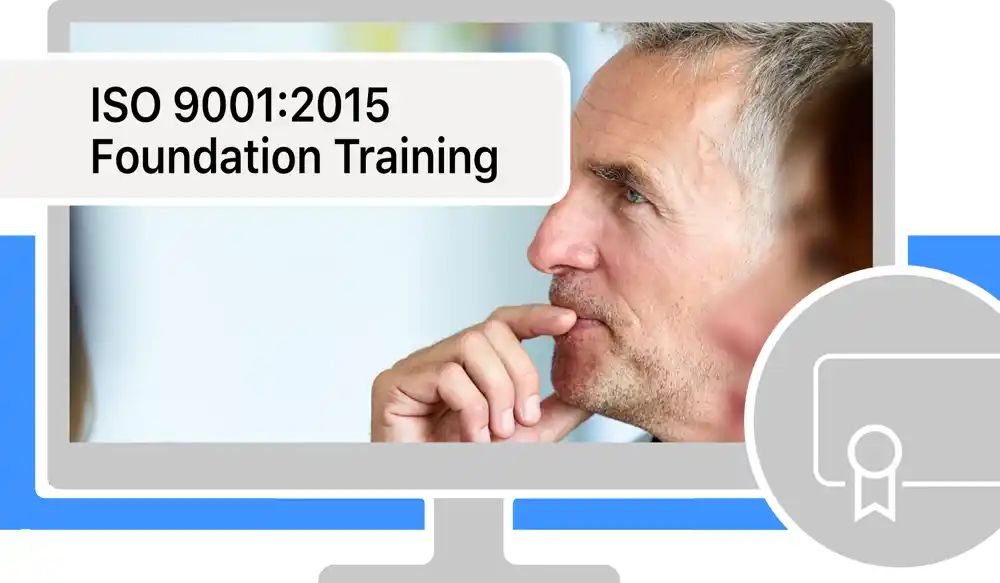Decoding the ISO 9001:2015 Requirements
5 January 2024
The ISO 9001:2015 standard is a set of requirements that set the framework for an organization's quality management system. Since the requirements should apply to any organization in any industry and of any size worldwide, they had to be written in a rather generic way. The downside is that it's rather hard to understand what exactly the standard stipulates. This article will shed some light.

Requirements for a Quality Management System
The ISO 9001:2015 requirements stipulate the processes of a quality management system but what does this mean? A quality management system is vastly more than quality control. While quality control refers to checking certain features of products or services to verify that they conform to requirements, a quality management system is about the management of the entire company and its processes. As such, the ISO 9001 standard affects virtually the entire company.
The 10 Clauses
The ISO 9001:2015 standard is organized into 10 clauses. Clauses 1-3 don't contain any requirements. They are the introductory chapters containing additional explanations: the scope of the ISO 9001 standard, references and definitions. Clauses 4-10 contain the actual ISO 9001:2015 requirements.
Introductory clauses
The three introductory clauses don't contain any ISO 9001:2015 requirements but rather provide important background information to facilitate easier understanding. Clause 1 (Scope) explains that the standard specifies the requirements for a quality management system so that products and/or services consistently meet requirements and enhance customer satisfaction. Clauses 2 and 3 simply references ISO 9000:2015 which contains fundamental information and vocabulary.
Context of the Organization
In clause 4, ISO 9001:2015 sets the requirements for the foundation of the ISO 9001 quality management system. The "context of the organization" is the business environment in which the company operates.
More on the requirements of ISO 9001:2015, clause 4
Leadership
Clause 5 of ISO 9001:2015 is all about the responsibilities of top management within the ISO 9001 quality management system. It includes requirements for active involvement as well as for responsibilities that can be delegated.
More on the requirements of ISO 9001:2015, clause 5
Planning
Clause 6 of ISO 9001:2015 focuses on planning. The requirements address risk management, the definition of organizational targets, and change management.
More on the requirements of ISO 9001:2015, clause 6
Support
Clause 7 of ISO 9001:2015 is all about support functions. It includes requirements for various resources, competence and training, communication and documentation.
More on the requirements of ISO 9001:2015, clause 7
Operation
In clause 8, the ISO 9001:2015 standard sets the requirements for the processes needed to achieve the product or service. This is how your product or service is designed, produced, tested, handled, shipped, etc.
More on the requirements of ISO 9001:2015, clause 8
Performance Evaluation
Clause 9 of ISO 9001:2015 is all about measuring and evaluating. Most of the requirements in this clause address various ways of generating data but there is also a section on analysis and one on management reviews where decisions are made based on the derived information.
More on the requirements of ISO 9001:2015, clause 9
Improvement
Clause 10 of ISO 9001:2015 requires companies to determine and identify opportunities for improvement. The corrective action process is one of the key sections in the standard designed to achieve improvement.
More on the requirements of ISO 9001:2015, clause 10
The Structure of the ISO 9001:2015 Requirements
Clauses 4 through 10 have been set up to follow the PDCA cycle. PDCA stands for "Plan, Do, Check, Act". PDCA is a continuous quality improvement model that is used in a variety of contexts, including Six Sigma implementations. The main point of the PDCA cycle is to help facilitate change in an organized, systematic manner and fundamentally supports the ISO 9001 goal of improving quality management.

Plan: Planning requires the establishment of objectives, determination of resources, and risk management. Important input factors are the context of the organization, customer requirements, and needs of other relevant interested parties.
Do: During this phase you need to implement what was planned. This is includes the heart of your business: the production and/or provision of services.
Check: The next part in the PDCA Cycle is to monitor and/or measure key processes and their output against targets and analyze the results.
Act: After evaluating the results of your monitoring and measuring, the standard stipulates to take actions to improve performance as necessary.
The ISO 9001:2015 requirements also follow ISO's High Level Structure which makes the format of management systems standards consistent across all ISO standards. In addition to the structure, also punctuation, choice of words, and basic terminology are consistent. All this makes it easier to integrate ISO 9001 with other management standards. The High Level Structure is defined in ISO's Annex SL.
Conclusion
ISO 9001 requirements affect each position in a different way. To make full use of ISO so that the organization runs more efficiently, customers are more satisfied, and profits are maximized, proper training is indispensible. All too often, executives and department managers are neglected when it comes to ISO 9001 training – despite the fact that it's these positions that could benefit most from ISO 9001.
No matter if you just want to find out more about ISO 9001:2015 requirements or if you want to ensure that all key positions get the best training, we have an effective online course for you.


